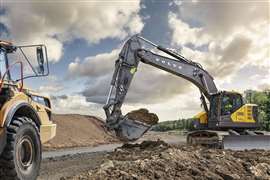Driving toward electrification
02 March 2021
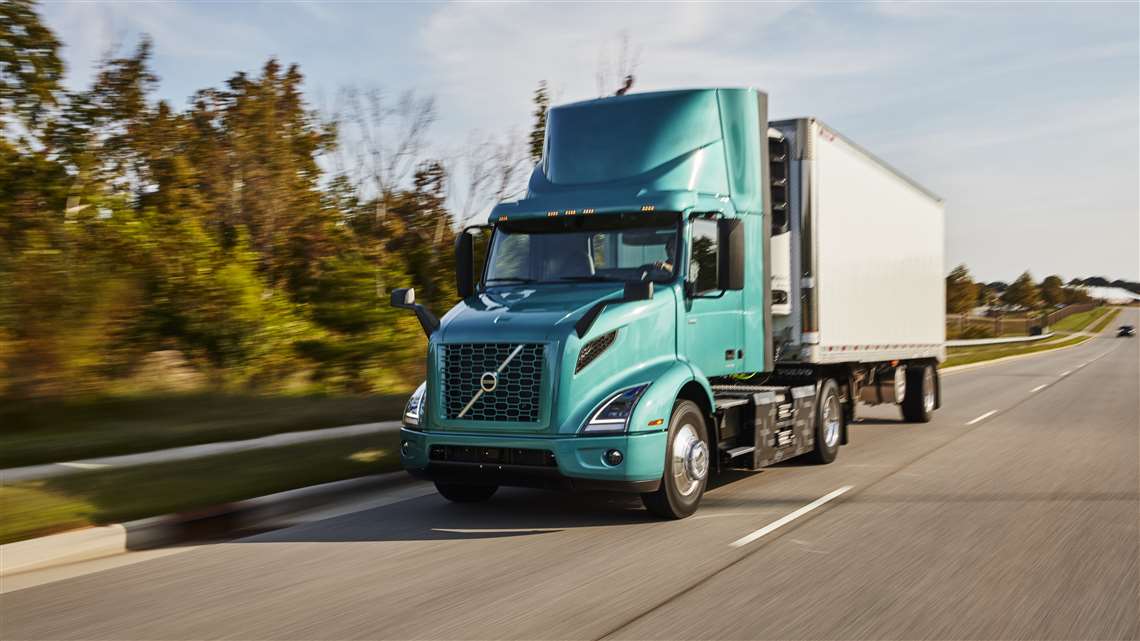 The Volvo VNR Electric is designed for local and regional hauling applications and is available as a single-axle straight truck or in two tractor configurations.
The Volvo VNR Electric is designed for local and regional hauling applications and is available as a single-axle straight truck or in two tractor configurations.
Recent electric truck debuts point toward transportation’s new future
By Mike Brezonick
For several years, trends in the commercial vehicle industry have pointed toward greater adoption of electric vehicles. Those trends have been driven primarily by regulation, as for example, a number of countries in Europe and Asia have enacted bans on sales of combustion engine-driven vehicles beginning in 2030.
Closer to home, California’s Advanced Clean Truck Rule requires stipulates that as soon as 2024, 9% of new Class 4 through 8 commercial trucks sold must be zero emissions. That percentage rises to 75% in 2035.
With the clock ticking, manufacturers of all types of commercial vehicles have begun launching new electric models in earnest. The last two-plus months has seen the rollout of several new e-vehicles, from Class 8 heavy-duty trucks to Class 3 vans designed specifically for small business and logistics applications.
VOLVO VNR ELECTRIC
At the high end of the spectrum is Volvo Trucks North America, which in late 2020 officially began taking orders for its VNR Electric Class 8 truck, which has a scheduled production start early this year.
“The Volvo VNR Electric marks a significant step forward for electromobility in an industry that we are committed to leading as it undergoes rapid, significant change,” said Peter Voorhoeve, president of Volvo Trucks North America. “Volvo Trucks believes and invests in sustainable electromobility. Our deep understanding of the transportation ecosystem – the technology, infrastructure and applications in the trucking industry – have enabled us to deliver a solution that is both advanced yet easy to own and operate.”
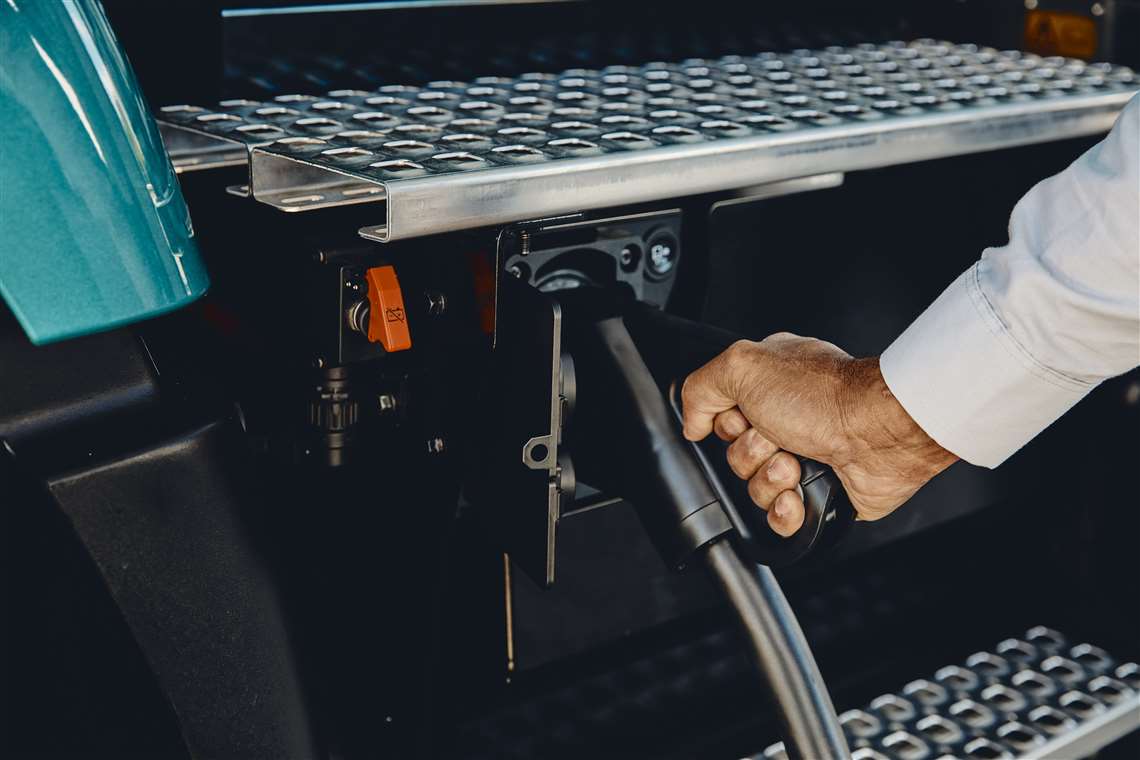 The charging connection for the Volvo VNR Electric is under the driver side steps.
The charging connection for the Volvo VNR Electric is under the driver side steps.
The Volvo VNR Electric is designed for customer applications and driving cycles with local and regional distribution ranges, including food and beverage and pickup and delivery routes. It is available in three configurations, a single-axle straight truck with a gross vehicle weight rating (GVWR) of 33,200 lb. and two tractor configurations – 4x2 with a 66,000 lb. gross combination weight rating (GCWR) and 6x2 with up to an 82,000 lb. GCWR in specific applications.
The electric driveline is a fully integrated, Volvo proprietary solution, rated 339 kW (455 hp) and generating up to 4051 lb.ft. of torque. The truck incorporates a two-speed Volvo I-Shift transmission designed to deliver smooth and efficient acceleration with excellent startability and low-speed maneuverability, Volvo said.
The truck utilizes lithium-ion batteries with a capacity of 264 kWh, which provide the vehicle an operating range of up to 150 miles based on the configuration. The batteries can be charged up to 80% within 70 minutes, Volvo said, and regenerative braking can increase range by returning power up to 15% back into the battery, depending on the duty cycle.
The VNR Electric also include Volvo Trucks’ onboard telematics including Remote Diagnostics and a new real-time battery monitoring service from the Volvo Trucks Uptime Center.
The new electric truck will be fully integrated into the production and manufacturing processes at Volvo’s New River Valley assembly plant in Dublin, Va.
“In launching the VNR Electric, we’re answering a very real need from fleet customers across North America – to not just deliver a road-tested, battery-electric truck, but to provide them with solutions for the entire lifecycle of the vehicle,” said Voorhoeve. “Before making the VNR Electric truck available to our customers, we thought through every aspect of electrification so they didn’t have to. We have worked alongside our fleet customers to plan beyond the vehicle and have developed an entire support system, ensuring this vehicle meets their needs day-in and day-out.”
Volvo said the VNR Electric truck has been certified by both the U.S. Environmental Protection Agency and California Air Resources Board.
GM’S BRIGHTDROP
General Motors has launched an entirely new business, BrightDrop, which it said will offer electric first-to-last-mile products, software and services for delivery and logistics applications.
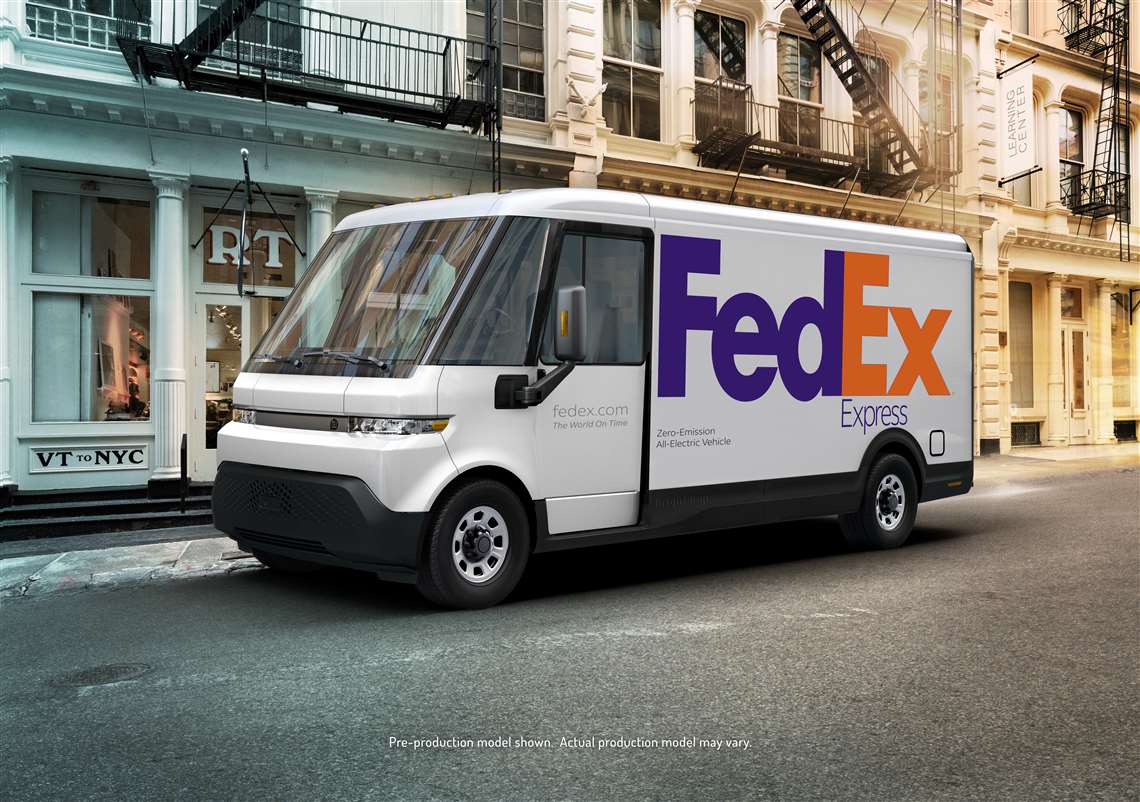 The BrightDrop EV6000 electric logistics vehicle incorporates an all-wheel drive powertrain utilizing GM’s proprietary Ultium battery system.
The BrightDrop EV6000 electric logistics vehicle incorporates an all-wheel drive powertrain utilizing GM’s proprietary Ultium battery system.
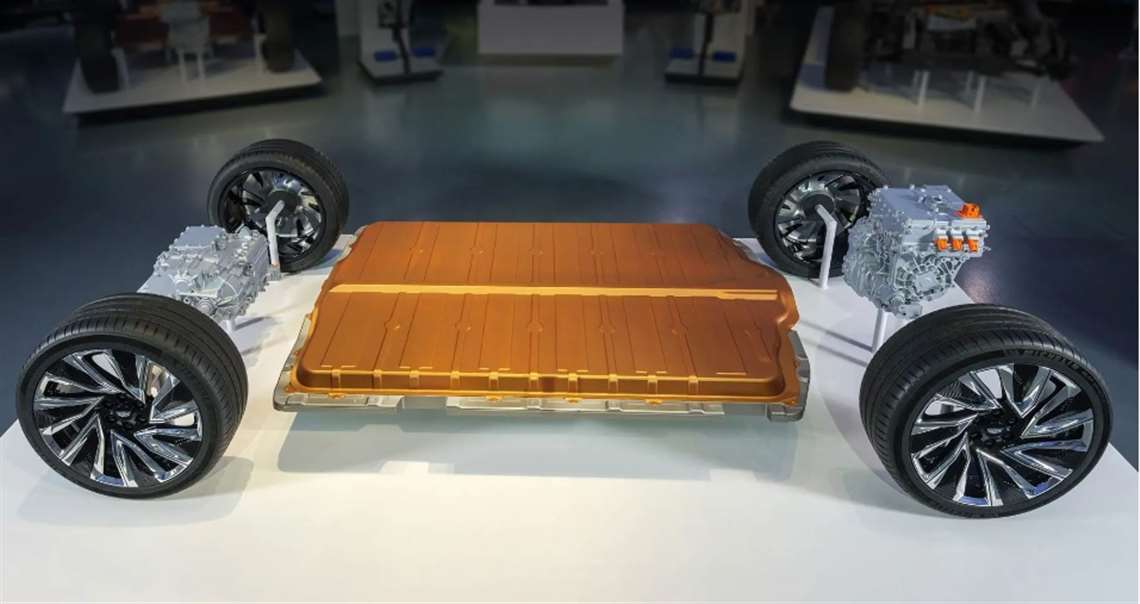
“BrightDrop offers a smarter way to deliver goods and services,” said Mary Barra GM chairman and CEO. “We are building on our significant expertise in electrification, mobility applications, telematics and fleet management, with a new one-stop-shop solution for commercial customers to move goods in a better, more sustainable way.”
BrightDrop is developing an integrated set of solutions that to help improve almost every aspect of first-to-last-mile delivery. The BrightDrop ecosystem includes the EP1, a propulsion-assisted, electric pallet developed to easily move goods over short distances, i.e., from the delivery vehicle to the customer’s front door. It uses electric hub motors and offers adjustable speeds up to 3 mph and a carrying capacity of 200 lb.
BrightDrop’s second product to market will be the EV600 – an all-wheel drive electric light commercial vehicle purpose-built for the delivery of goods and services over long ranges. It is intended to combine zero- emissions driving with a range of advanced safety and convenience features more common in consumer electric vehicles.
The EV600 is designed for a payload up to 2200 lb. with a GVWR up to 9990 lb. It incorporates a proprietary propulsion system that utilizes GM’s Ultium battery system that provides an operating range of up to 250 miles on a full charge, the company said. It can charge up to 170 miles in an hour using a 120 kW dc fast charging system and also incorporates regenerative braking that extends vehicle range and extends the life of the service brakes, GM said. The vehicle also captures waste heat from the battery as needed for the cab rather than rejecting it to the environment.
Early customer interest in the EV600 has been strong, GM said, with the first vehicles to be delivered by the end of this year. BrightDrop expects to make the EV600s available to more customers to order starting in early 2022.
BrightDrop and FedEx Express have a pilot program scheduled for the EV600 and FedEx Express is also slated to be the first customer of the EV600 later this year.
FORD’S E-TRANSIT
Ford has unveiled an all-electric version of its Ford Transit cargo van. Set for launch in 2022, E-Transit is the first all-electric cargo van from a full-line automaker in North America and offers a choice of eight configurations including three roof heights and three lengths, plus chassis cab and cutaway models.
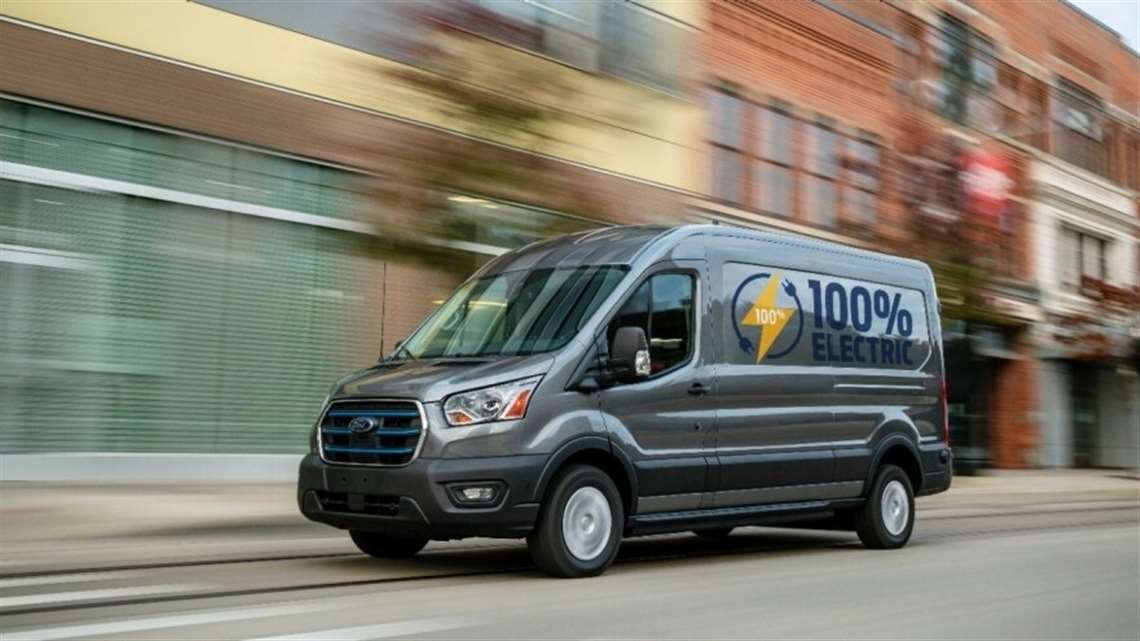 Ford’s E-Transit cargo van has a rear-mounted 198 kW electric motor and 67 kWh floor battery that delivers an estimated range of 126 miles in the low-roof cargo van variant.
Ford’s E-Transit cargo van has a rear-mounted 198 kW electric motor and 67 kWh floor battery that delivers an estimated range of 126 miles in the low-roof cargo van variant.
“Ford is North America and Europe’s commercial truck and van leader, so the transition of fleet vehicles to zero emissions, especially for the fast-growing last-mile delivery segment, is critical to achieve our carbon neutrality goal by 2050,” said Jim Farley, Ford president and CEO. “Ford is ready to lead the charge, starting with the all-electric Transit and all-electric F-150 on the way. This is good for the planet and a huge advantage for customers to help lower their operating costs and provide connected fleet management technologies that will help their businesses.”
For E-Transit cargo vans in the U.S., Ford is targeting a maximum payload of 3800 lb. and up to 4290 lb. for cutaway versions. It incorporates a proprietary powertrain that consists of a rear-mounted 198 kW electric motor and 67 kWh floor battery that delivers an estimated range of 126 miles in the low-roof cargo van variant. Ford said scheduled maintenance costs for the all-electric Transit are estimated to be 40% less than the average scheduled maintenance costs for a gas-powered 2020 Transit over eight years or 100,000 miles.
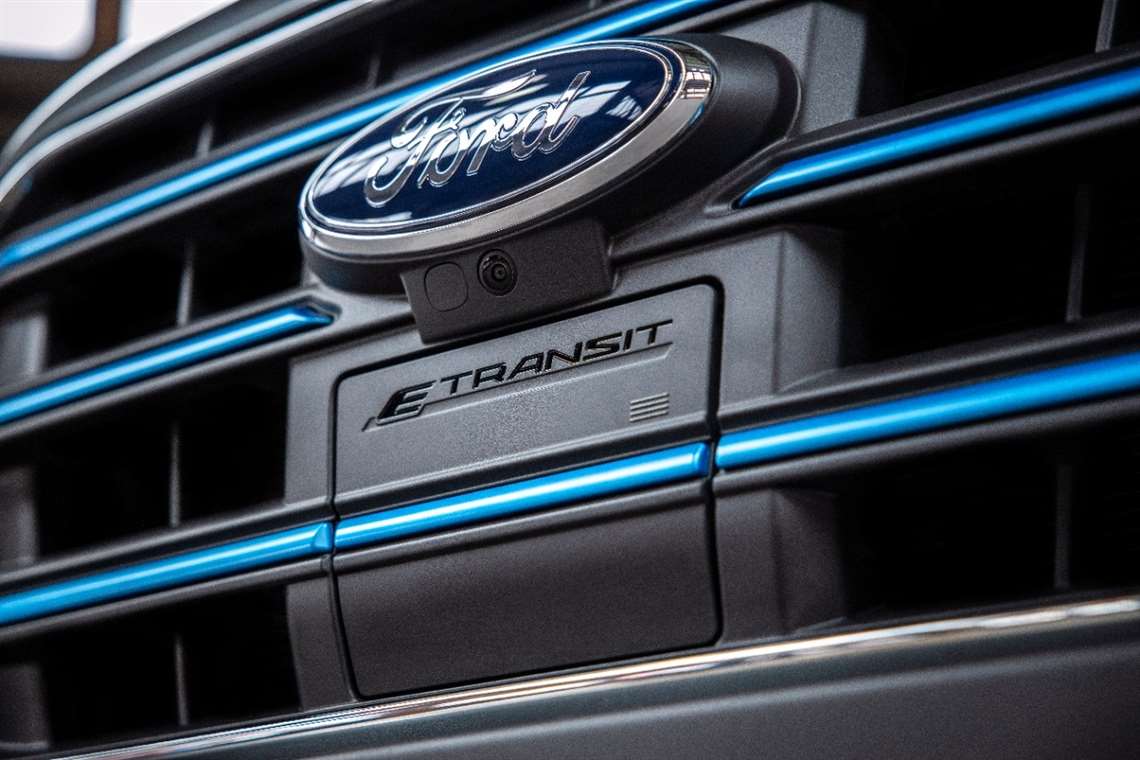 E-Transit allows for both ac and dc fast charging, coming standard with a Ford Mobile Charger that can plug into a normal 120 V outlet for slow and steady charging or into a 240 V outlet for faster charging.
E-Transit allows for both ac and dc fast charging, coming standard with a Ford Mobile Charger that can plug into a normal 120 V outlet for slow and steady charging or into a 240 V outlet for faster charging.
E-Transit allows for both ac and dc fast charging, coming standard with a Ford Mobile Charger that can plug into a normal 120 V outlet for slow and steady charging or into a 240 V outlet for faster charging.
Ford said it will assemble the E-Transit for North American customers at Kansas City Assembly Plant in Claycomo, Mo.
ROUSH CLEANTECH
Roush CleanTech, long known as a specialist in alternative fuel vehicles, has developed a new medium-duty electric truck based on a Ford F-650 chassis.
“While we’re known as the propane guys, our company has a rich history in product development of advanced technologies from battery electric to hydrogen to propane to natural gas,” said Roush CleanTech President Todd Mouw. “You name it, we’ve been in the middle of it over the last 35 or 40 years.”
A regular cab configuration, the new Class 6 vehicle is available with three wheelbases (242, 260 and 281 in.) and a maximum GCWR of 26,000 lb. The powertrain consists of a six-phase synchronous permanent magnet motor/generator powered by two lithium-ion battery packs rated 138 kWh. The system offers the vehicle a range of 100 miles and road speed up to 65 mph, Roush said.
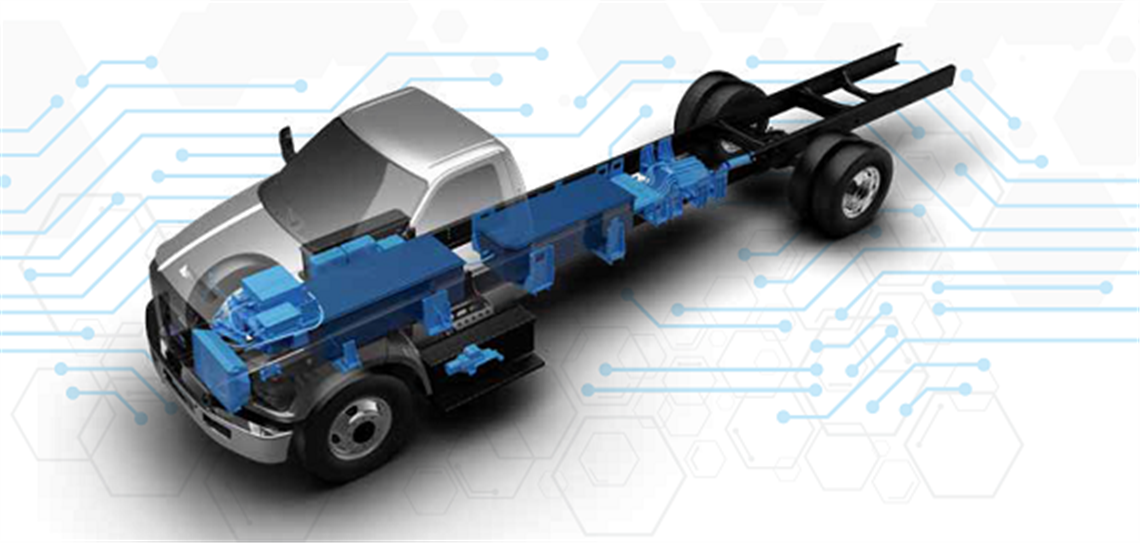 The layout of Roush CleanTech’s new Class 6 electric truck.
The layout of Roush CleanTech’s new Class 6 electric truck.
The battery packs are positioned between the frame rails, underneath the cab and just behind the cab, respectively. The back-of cab components do not exceed top of frame rails to provide versatility and minimal impact to end users, and body companies and upfitters.
The vehicle is also equipped with a dc to dc converter to step down the system voltage for powering the low voltage vehicle systems and recharge the onboard lead acid batteries.
Roush delivered its first unit to Penske Truck in California in December, with two more scheduled to be delivered to the city of Los Angeles early this year. Regular production of the trucks, which can be used for delivery vans, utility trucks and construction equipment is scheduled to begin in the summer.
LIGHTNING VAN
Lightning eMotors, a Colorado-based provider of commercial electric vehicles for fleets, recently unveiled a new model in its Class 3 Lightning Electric Transit Van line. The new, longer-range vehicle is the fourth generation of its battery-electric and fuel cell electric platform, based on the Ford Transit 350HD chassis.
“Used extensively by commercial and government fleets, Class 3 vehicles, such as passenger vans, cargo vans and ambulances, are ripe for electrification,” said Tim Reeser, CEO of Lightning eMotors. “Class 3 vehicles have an extended wheelbase and expanded cargo and payload capacity and are commonly used by mid-to-large-sized fleets.”
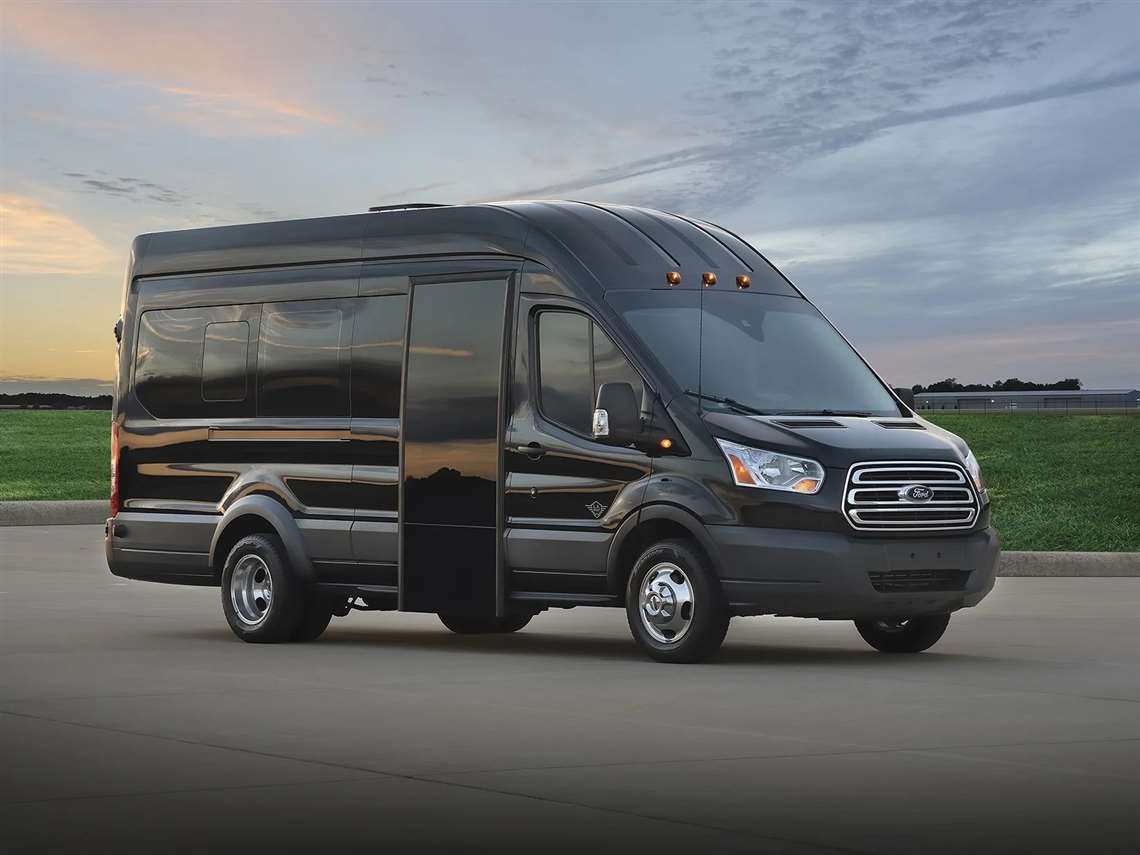 Lightning eMotors has launched a fourth generation in its Class 3 Lightning Electric Transit Van line. The Gen 4 powertrain, with new battery technology and up to 105 kWh of battery capacity, has up to 40% more range than the Gen 3’s 120-mile range as a battery-only vehicle, with fuel cell configurations extending the range to 250 miles.
Lightning eMotors has launched a fourth generation in its Class 3 Lightning Electric Transit Van line. The Gen 4 powertrain, with new battery technology and up to 105 kWh of battery capacity, has up to 40% more range than the Gen 3’s 120-mile range as a battery-only vehicle, with fuel cell configurations extending the range to 250 miles.
The Gen 4 powertrain, with new battery technology and up to 105 kWh of battery capacity, has up to 40% more range than the Gen 3’s 120-mile range as a battery-only vehicle, with fuel cell configurations extending the range to 250 miles, the company said.
Incorporating a new modular liquid-cooled lithium-ion battery system, the Lightning Electric Transit Van 350HD can add 60 miles of range in 30 minutes of charge time when using dc fast charging with a standard SAE J1172 CCS-1 Combo charging port.
With an 11,000 lb. GVWR, the vehicle has a payload capacity of up to 4840 lb., depending on the selected battery configuration option and other equipment.
Introduced in 2018, the Lightning Electric Transit Van, along with Lightning eMotors’ Class 4 and 5 Ford-chassis-based electric vehicles are certified under Ford’s eQVM (Advanced Fuel Qualified Vehicle Modifiers) program.
Assembly is performed at Lightning eMotors’ Loveland, Colo., facility, which is currently ramping up to reach a production capacity of 1000 electric commercial EVs per year in 2021 and with a goal of 20,000 vehicles per year by 2025.
This story originally appeared in the February issue of Diesel Progress. For a free subscription, click here.
POWER SOURCING GUIDE
The trusted reference and buyer’s guide for 83 years
The original “desktop search engine,” guiding nearly 10,000 users in more than 90 countries it is the primary reference for specifications and details on all the components that go into engine systems.
Visit Now
STAY CONNECTED




Receive the information you need when you need it through our world-leading magazines, newsletters and daily briefings.
CONNECT WITH THE TEAM










